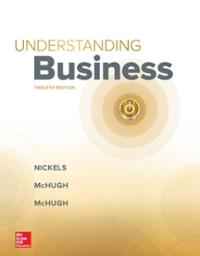

\Read and answer the question.
Flag
a) Assume that the marginal cost of firms in an industry is given by M C = 2y and there are no fixed costs. Demand is simply given by y = 1000 and all demand will be met at the price which equals to minimum average cost. What will be the price in this market, how many firms will operate in it and what output will each firm produce?
Question
6. The following two tables present the SPSS regression results using the Ordinary Least Square (OLS) method. The dependent variable is the firm's performance measured by its profitability (%). The independent variables are the growth rate of sales (%), the ratio of investment to total assets (%), and education background of the employees (measured by the average number of employees' schooling years). The number of sample firms is 90. (Note: All parts of this question carry equal marks) Model Summary Adjusted R Std. Error of the Model R Square Square Estimate 1 153 133 0508356243 Coefficients Unstandardize Standardized d Coefficients Coefficients Sig. Model1 Std Beta Error Beta (Constant) 058 014 4.166 000 Sales growth 075 022 351 3.433 001 Investment .181 112 .166 1.619 109 Education level 004 .001 .218 4.000 .000 a Dependent Variable: profitability b. Independent variables: sales growth, investment, and education background of employees. (a) Write the fitted regression equation. Explain which type of data it is for each variable involved in the regression equation. Can you measure the education background of employees in an alternative way? (b) Interpret the estimation results and comment on the impact of independent variables on the dependent variable. (c) Interpret and discuss the model performance. (d) Suppose that the management of a company (similar to the sample firms) wants to know how the firm's industry affects its profitability. How would you modify the above- mentioned regression equation in order to consider the industry effect?4. Short-run equilibrium: Suppose there are 100 identical firms in a perfectly competitive industry. Each firm has a short-run total cost function of the form c(q) = 10 + 4q + 0.2q' + 300 (a) Calculate the firm's short-run supply curve, or equivalently find q as a function of market price, p. (b) On the assumption that there are no interaction effects among costs of the firms in the industry, calculate the short-run industry supply curve. (c) Suppose market demand is given by q = 8,000 - 200p. What will be the short-run equilibrium price and quantity ? (d) What is the consumer and producer surplus in the short-run?7. Short questions (5 points) a) Assume that the marginal cost of rms in an industry is given by M C = 2y and there are no xed costs. Demand is simply given by y = 1000 and all demand will be met at the price which equals to minimum average cost. What will be the price in this market, how many rms will operate in it and what output will each rm produce? (3) b) When countries open their borders to trade with other countries, con sumer good prices tend to fall. Based on what you know about supply, demand and equilibriums, explain the fall in consumer prices. (2)











